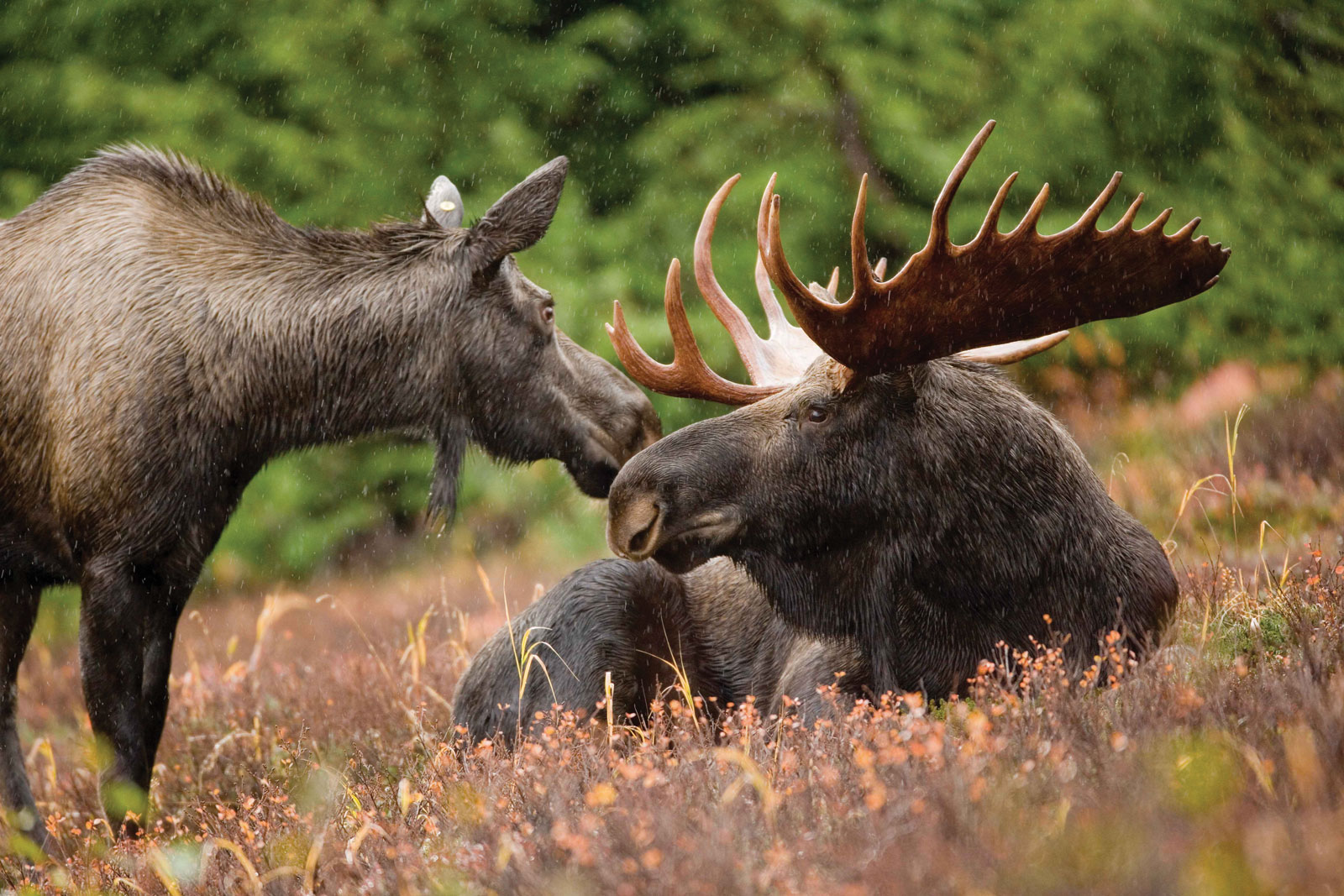Moose are the largest members of the deer family. They have long, thin legs and long, square heads. Only males grow antlers. Both the males and females have a flap of skin and hair hanging from their throats. It’s called a bell or dewlap and contains scent glands.
The name moose comes from the Algonquian Indian word “mons” which means twig eater. It is an appropriate name as moose are purely herbivores. In our areas they eat the twigs and leaves of willows, quaking aspen, dogwood, and birch. They will also eat fruit and may seek out fruit trees in our yards.
Moose do not have any upper front teeth, so they don’t just nip off leaves and twigs. Instead, they often pull twigs sideways through their mouths. They have tough lips and tongues. Stripping off two feet of leaves and shoots from a branch is no problem at all for a moose. An adult moose can eat 40 to 50 pounds of food a day.
A full-grown male, or bull, may stand six feet high at the shoulder and weigh 1,000 to 1,600 pounds. The female, or cow, is smaller; she may weigh between 800 and 1,300 pounds. Moose are covered by a thick layer of dark hollow hair.
In late May or early June, a cow moose seeks out a quiet, hidden place to give birth to her calf. Usually the cow will give birth to one calf, but sometime twins are born. The cow will keep the calf well-hidden for the first few weeks and is very protective of her calf during this time. She will charge anything that gets too close by rushing forward and striking with both front hooves. A calf weighs between 20 to 35 pounds when born, but it grows quickly on the cows’ rich milk. By the time the calf is one week old, it can run faster than a person.
Plants become part of a calf’s diet when it is two weeks old. By the second month, a calf can gain over two pounds a day, resulting in a six-month-old calf weighing nearly 400 pounds. The calf stays with the cow for the first winter. Just prior to giving birth to the next years calf, the cow will force the yearling calf away, which makes yearling moose behavior very unpredictable.
While the population of moose in Idaho are seeing declines, moose in Southcentral Idaho which includes the Wood River Valley are seemingly healthy. Moose are commonly seen throughout the Valley, year-round.
If You Encounter a Moose
When hiking, make noise to announce your presence so you do not surprise a moose. Do not hike or trail run with headphones or earbuds. Wearing headphones or earbuds eliminates your extremely valuable sense of hearing.
If you encounter a moose you should watch the behavior of a moose, looking for signs of agitation or stress. If a moose lays its ears back, that means it is stressed and could charge at any time. A moose will often snort or grunt or stomp its hooves if it is stressed or feels threatened. If you see any of these behaviors the best course of action is to put something between you and the moose – like a tree or a vehicle if you’re near something that could be a barrier.
Never allow your dog to have the opportunity to chase a moose. Moose view dogs as a threat. There are times when a moose might be more apt to charge a person or dog including 1) a cow with calf (never put yourself between a cow and calf), 2) during the mating rut when males can become very agitated, and 3) in late winter when moose are coming out of a long winter, food is scarce and their fat reserves are depleted.
Avoiding Conflicts
Moose are often attracted to neighborhoods to seek shelter and food. Residents should never intentionally feed moose. Landscaping around homes and businesses should be designed using plants that will not attract moose.
Daylight basement window wells should be covered using steel or aluminum grates to exclude animals like moose from falling into the window wells. Moose have been known to fall into these spaces and then end up inside the house.
